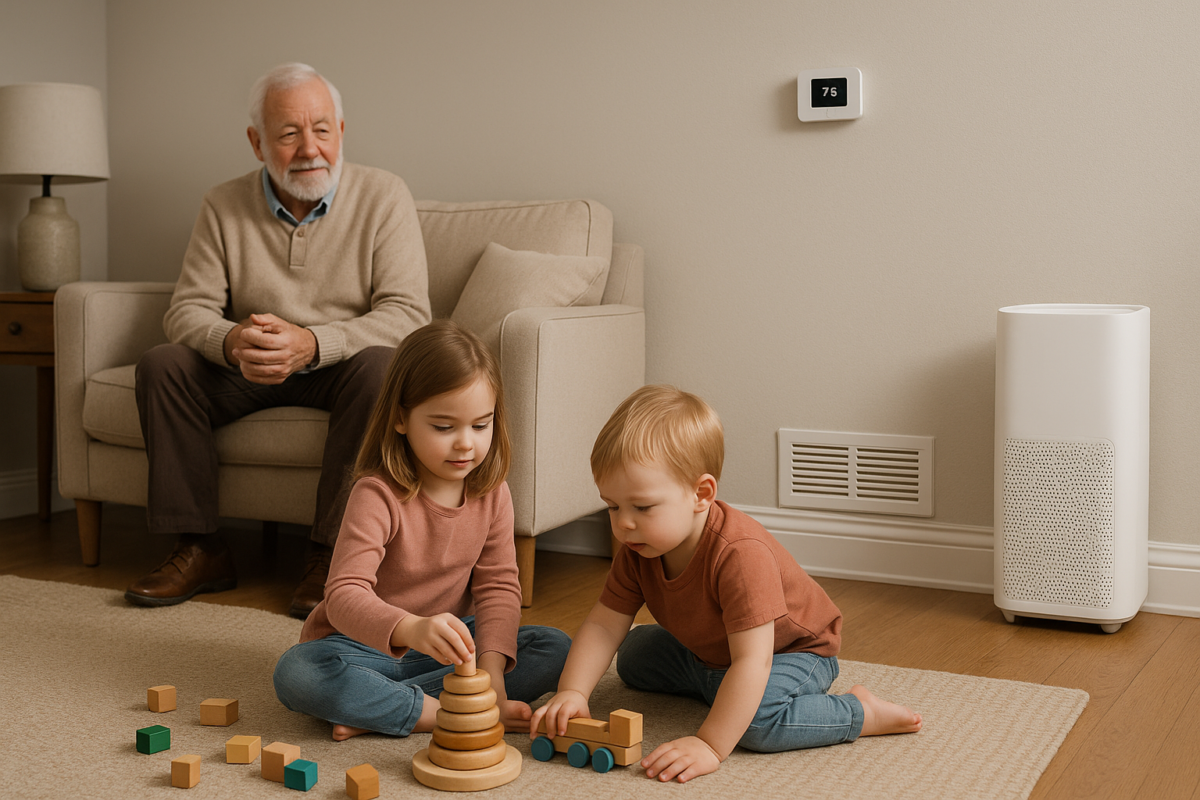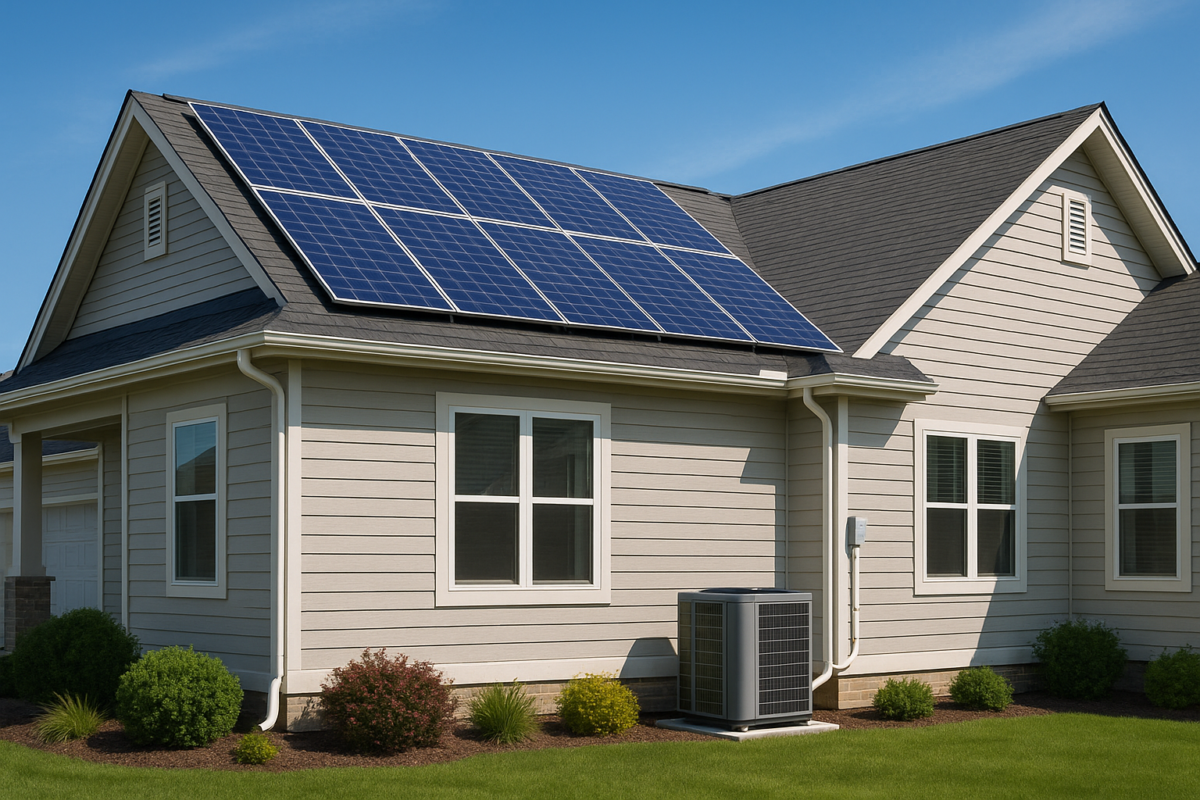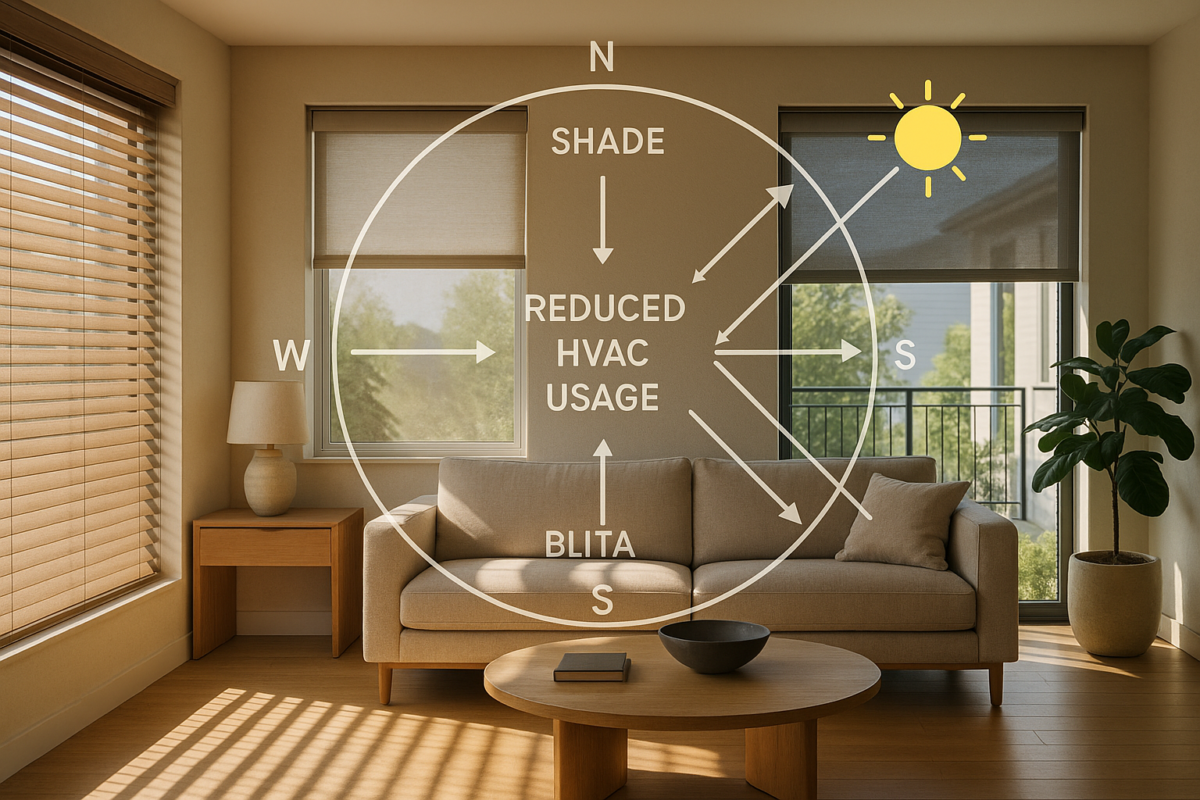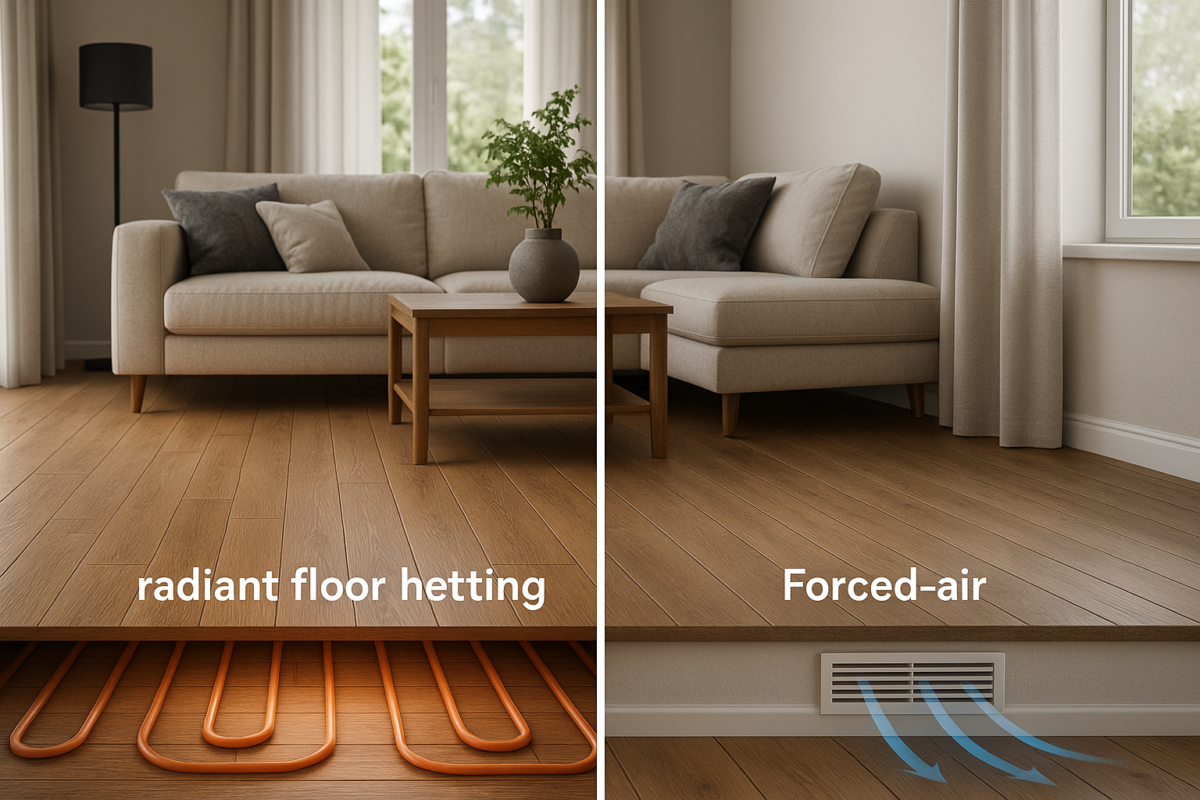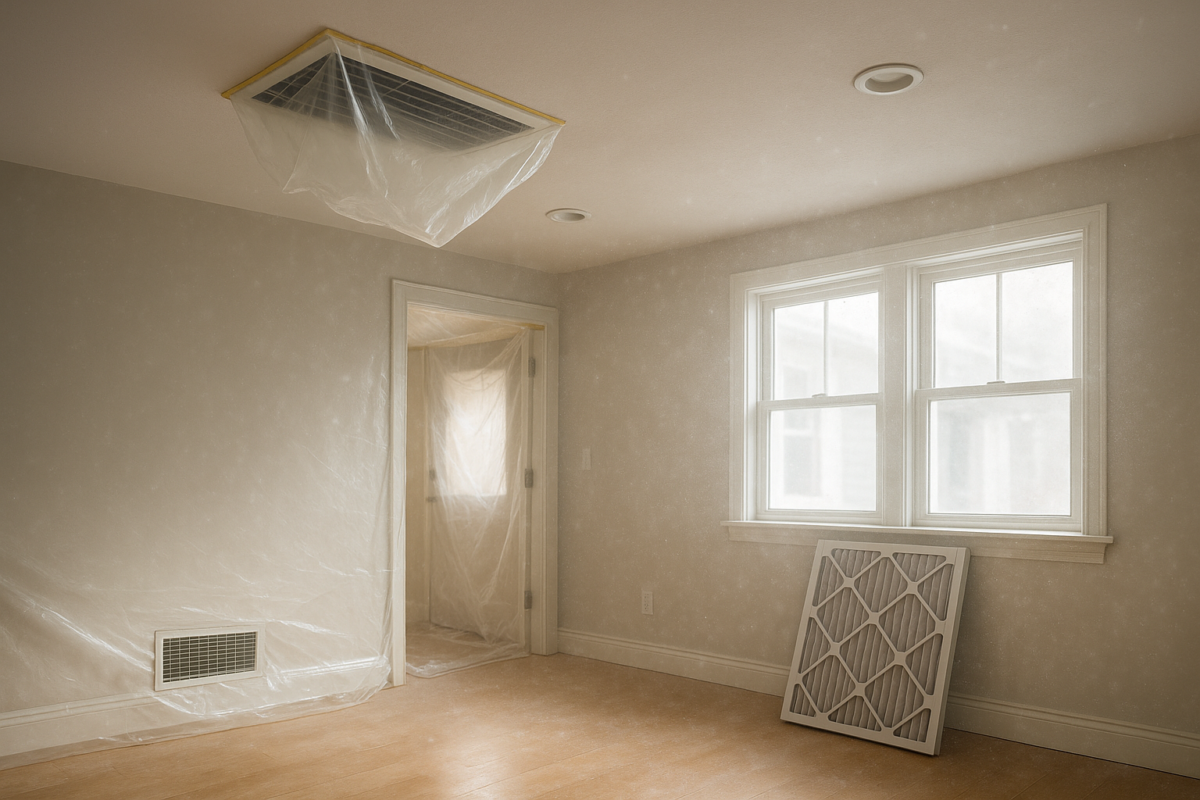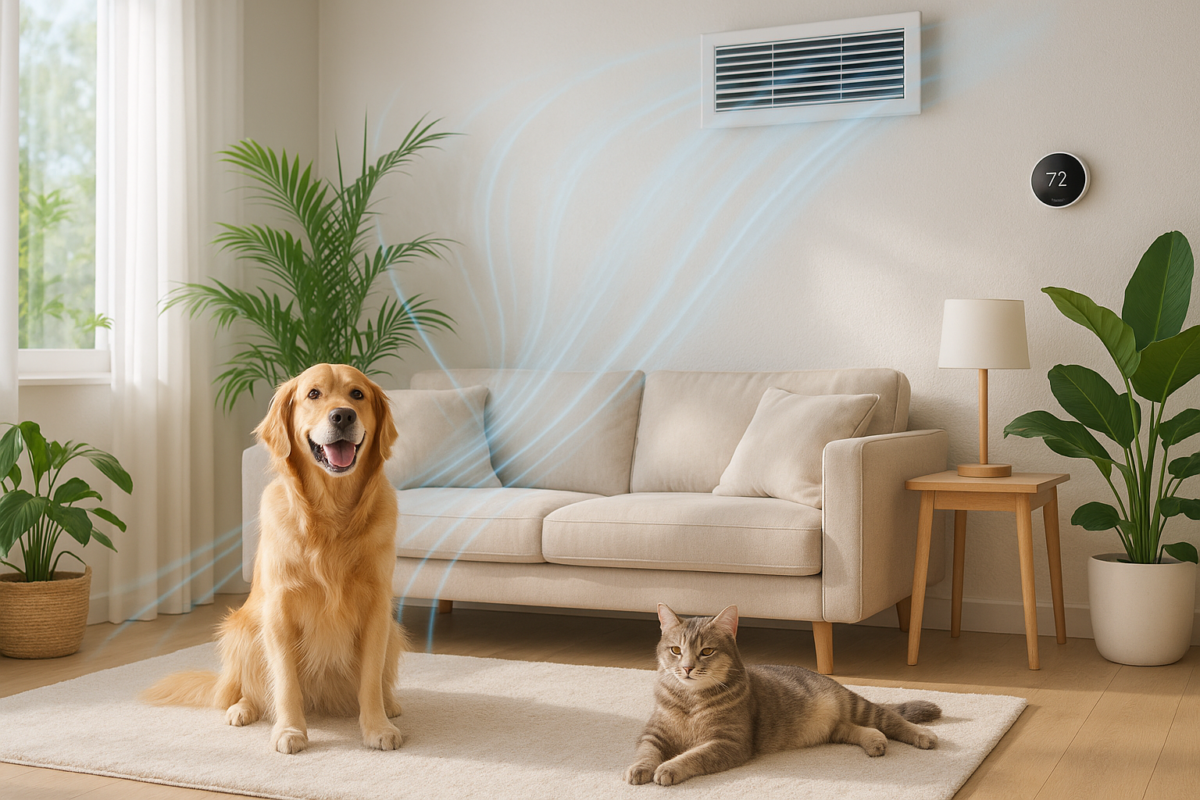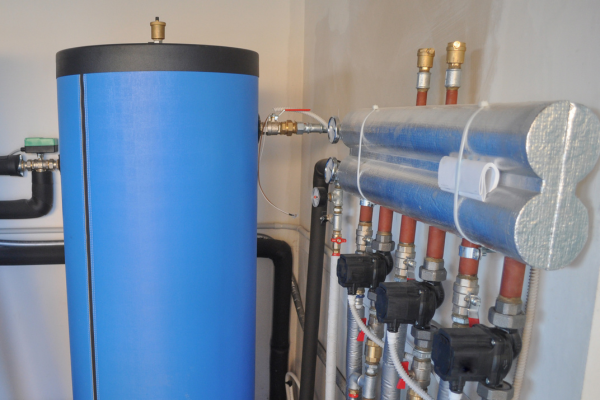HVAC Safety Tips for Homes with Young Kids
When young children are in the home, comfort and convenience cannot come at the expense of safety. HVAC systems bring welcome climate control, but their various parts can become sources of concern for parents and guardians. Keeping little ones secure and healthy around vents, thermostats, ductwork, and outdoor units requires a few key changes and careful attention. This article will show practical steps to make your HVAC system both a source of comfort and peace of mind.
Childproof HVAC Vents and Registers
Floor and wall registers attract curiosity from young children. Small fingers can fit through openings, and loose covers invite kids to pull, prod, or drop small items inside. If a vent cover shifts out of place, it creates a trip hazard and could lead to children exploring the ductwork with dangerous results. Improperly protected vents also compromise indoor air quality and HVAC efficiency.
Secure each vent register in place with screws. Choose covers designed to stay fixed. Many manufacturers now sell childproof vent covers with fine mesh or grille patterns. Mesh prevents small toys, coins, and other objects from falling through while allowing air to circulate freely. Reinforce these covers if your little one has extra determination during playtime.
If your current ductwork design does not support closure with screws or permanent mesh, invest in upgrades from a licensed HVAC contractor. Protection at these entry points means peace of mind at all times. Always conduct routine checks to spot shifting or warping that could offer a new opportunity for kids to experiment with the vents.
Safe Thermostat Placement
Thermostats are often installed at adult chest height for convenience, but this is well within arm’s reach for many toddlers. Toddlers are endlessly fascinated by blinking displays, switches, and up or down buttons. Unsanctioned adjustments can result in uncomfortable rooms, wasted energy, or even costly HVAC repairs if systems are overworked by constant temperature changes.
Mount the thermostat at a height above your child’s ability to reach or interact with it. If this is not possible with your current wiring, use a clear locking cover to block access while still allowing adults to monitor and use the interface. Many modern smart thermostats offer digital locks or a PIN system so only authorized users can change the settings.
Keep the thermostat visible for adult use but hidden from accidental bumping or intentional fiddling. Place furniture or decor in ways that discourage climbing or reaching. Protect the thermostat with the same diligence you use for tablets, remotes, and electronics. Sticking to this approach keeps your home’s climate steady and comfortable at all times.
Shield Utility Rooms and HVAC Equipment
The utility area is usually home to the HVAC system’s central components, electrical panels, and sometimes water heaters or plumbing valves. Children love to snoop and imitate adults doing important chores. Utility rooms can be filled with sharp edges, moving fans, and hot or cold surfaces, making them one of the least safe playgrounds in the house.
Install strong childproof locks on any doors leading to utility rooms or HVAC closets. If you lack doors or the layout is open, fit safety gates that block small children from wandering in unsupervised. Never store brooms, solutions, or step stools in this area if they might encourage exploration. Even a short and narrow closet should be off-limits to anyone too young to understand the hazards inside.
Audit the room regularly for items left out that could attract a curious child. If service technicians leave behind tools or components, remove them at once. Your goal should be zero opportunities for unsupervised access, no matter how innocent the space may seem.
Protecting the utility area also involves checking for carbon monoxide leaks or other dangerous emissions. Install carbon monoxide detectors in these spaces and in hallways leading to bedrooms. Maintain working batteries in all alarms and test the units often. If any alarm sounds unexpectedly, evacuate your family and contact emergency services and your trusted HVAC company at once.
Childproof HVAC Electrical Components
HVAC systems rely on various electrical connections. Outlets near the system, exposed wires, and power cords all require a thoughtful approach to safety. Toddlers may stick objects in outlets, tug power cords, or trip over wires that snake along the floor or walls.
Fit all visible outlets with high-quality tamper-resistant covers. Choose covers that stay secure even with repeated contact. Traditional plugs are often too easy for persistent fingers to pry loose. Modern safety covers are hard plastic and blend in with most room décor while offering real protection.
Route all exposed wires along walls or through dedicated conduits. If your HVAC unit requires extension cords or visible plugs, anchor the cords using mounts that keep them flush to the wall. Never leave extra slack or coiling, which invites grabbing or tripping. Tuck cords behind furniture whenever practical to keep them out of sight and reach.
If you detect fraying, loose wiring, or odd smells, call a licensed HVAC technician immediately. Quick response prevents further risk and keeps all residents secure. Do not attempt amateur repairs on electrical components under any condition. Bringing in a professional is always the safest path.
Outdoor Unit Protection
Most homes with central air conditioning systems have an outdoor condenser unit. While these machines are built to handle tough weather, children see them as fascinating objects in the yard or garden. The spinning fan blades, electrical wires, and metal covers should never be handled by children. Unprotected outdoor units also risk being jammed with toys or other debris, leading to system failure or even personal injury.
Install a secure barrier or low fence around the HVAC condenser unit. Choose materials that allow for plenty of airflow and leave space for regular maintenance visits. Decorative lattice, rigid mesh, or slatted wood are effective at blocking direct access while avoiding suffocation of the unit. Gates or latches provide entry only for adults or service professionals.
Regularly check that debris, yard tools, or outdoor playthings have not accumulated near the outdoor unit. Lawn clippings, leaves, or soccer balls can hide damage or prompt children to go exploring where they should not. If your HVAC system sits close to walkways, add extra signage or garden decor to steer children’s attention elsewhere.
Barriers do not remove the need for supervision, but they significantly lower the possibility of children attempting to touch or climb on the unit. Proper protection prevents unplanned disruptions to your cooling and keeps small hands safe year round.
Keeping HVAC Maintenance a Priority
Regular checks and timely professional maintenance are a parent’s best ally in keeping any home system safe for kids. Licensed HVAC technicians can identify worn parts, loose connections, blocked vents, or other hidden concerns before they lead to hazard. Maintenance calls also help keep energy bills manageable and prevent unexpected system breakdowns.
Book routine inspections at least once a year, preferably before the heating or cooling season begins. If you detect unusual noises, changes in airflow, strong odors, or visible wear, schedule an evaluation sooner. Preventative action now saves worry later and is always the best investment for a safe household. Most HVAC companies offer seasonal programs that keep all components in peak working order.
Don’t skip routine filter changes. Dirty filters lower indoor air quality and may place extra load on your system, causing more frequent breakdowns. Set reminders or sync changing intervals to family appointments, school schedules, or holidays. Most homes benefit from a fresh filter every few months, or more often for those with severe allergies, pets, or frequent construction nearby.
Educating Children on HVAC Safety
As children grow, so should their understanding of home safety. Take time to explain the potential danger of vents, thermostats, outdoor units, and utility rooms. Older kids can handle bigger responsibilities, like reporting changes in airflow or alerting parents if the thermostat display looks unusual.
Keep conversations direct and age appropriate. Simple rules such as “no touching the metal box outside” or “never put anything into vents” make a difference. Reward good safety habits when you see them in action. Invite older children to help with filter changes, vent cleaning, or testing alarms so they grow confident around home maintenance routines.
Avoid teaching through fear. Instead, encourage responsibility and curiosity within safe limits. Setting a strong example as an adult matters most. Display consistent habits by always locking doors after utility room visits or using tools only with supervision. Over time, your children will mirror these routines and treat all HVAC elements with respect.
Practical Routine for a Safer Home
Creating a secure environment for children around your HVAC system does not have to be overwhelming. Focus on steady habits rather than sporadic action. Schedule maintenance checks in advance, check vent stability during seasonal cleaning, discuss safety during family meetings, and keep protective barriers in place no matter the weather. The stability of these routines will create a culture of safety and calm for the entire family.
Gauge your efforts by the response of your children. If they seem interested in vents or thermostats, double check all physical security upgrades. For outdoor play, use the fence as an added teaching tool by reminding kids why it is there. If a child points out a new sound from the HVAC system, thank them and act quickly. Staying present and involved is more protective than any single hardware solution.
Trust that a secure HVAC system forms a vital part of your overall childproof approach. When vents, thermostats, and outdoor units are no longer tempting or accessible, your children enjoy the comforts of home without hidden danger. The peace of mind you gain with proactive steps supports every other aspect of family life.
Why Childproof HVAC Actions Matter for Every Home
Modern comfort systems perform best when safety measures match efficiency goals. Small openings, exposed wires, and tempting gadgets can go from minor inconvenience to acute risk within seconds when children are involved. By reinforcing vents, hiding wires, monitoring utility spaces, and teaching kids smart habits, your home stays both comfortable and protected.
HVAC safety for kids involves more than hardware. It is a shared task of routine, supervision, physical upgrades, and clear communication. Work with local professionals to close any safety gaps that outstrip your current tools or knowledge. Visit Livin On Mechanical for more information or to book an expert HVAC consultation that keeps your entire family safe and comfortable in every season.


